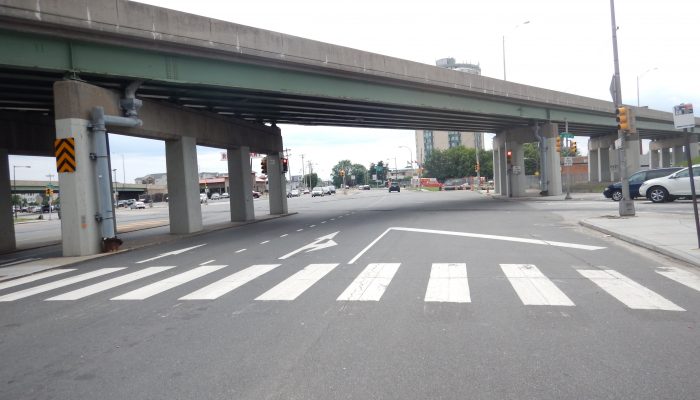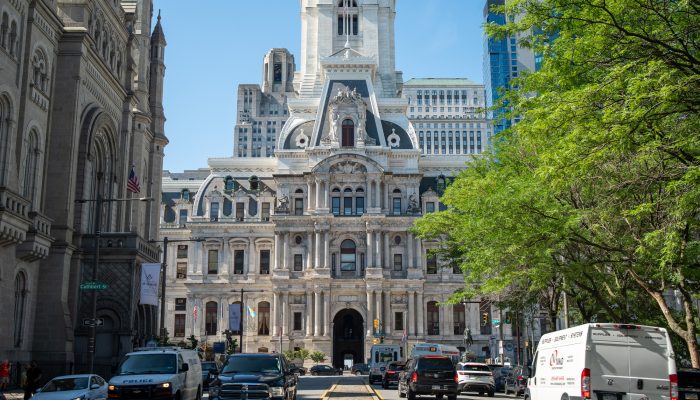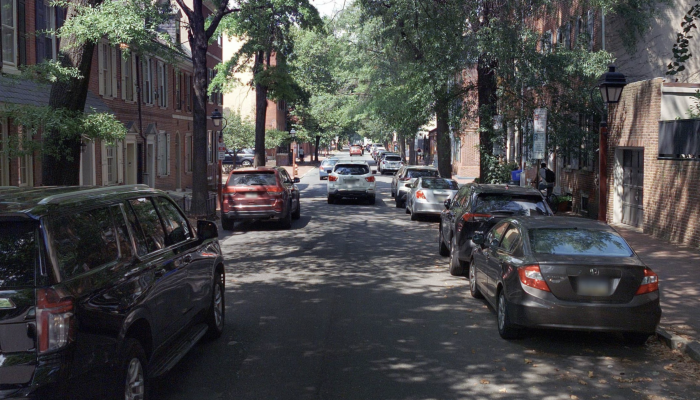If you live in South Philly, or have ever taken the back route to the Stadium area, then you know very well, just how hectic, the intersection is of 20th Street, and Penrose, Moyamensing, and Packer Avenues. Current traffic patterns can be confusing for pedestrians, motorists and cyclists due to the width and complexity of the oddly-shaped roadway. The City of Philadelphia is planning to improve the operation of the intersection to best accommodate all users. By changing from a traffic signal to a roundabout, the City looks to promote safe speeds and interactions among the people who utilize each of the thoroughfares.
A study of the area was conducted by a team of engineering consultants working with the Department of Streets. Further evaluation determined significant changes would be necessary to improve conditions at this intersection. A roundabout was selected for this location based upon many factors including: traffic operations, multi-modal accommodations, anticipated safety benefits, future costs, and available right-of-way.
Additional design features may include:
- Roadway & roundabout lighting
- Shared-use path for pedestrians and cyclists
- New signage and pavement markings
- Enhanced accommodations for trucks and buses approaching the intersection
- Entry points designed to slow vehicles
Benefits of Roundabouts:
Roundabouts have a proven safety benefit over signalized intersections with lower vehicle speeds, less delay, less conflict points, and a reduction in pollution due to less idling time. When compared to a signalized intersection, they have been shown to reduce total crashes by 21% and fatal crashes by 100% in Pennsylvania1.
In September 2020, PennDOT released data for 22 roundabouts on state routes at intersections that were previously stop or signal controlled. These were reviewed based on having at least three years of data available before and after the installation of the roundabout. This table shows the reduction in crashes for those 22 roundabouts.
| Type of Crash | Reduction in Crashes (PA) |
|---|---|
| Total # of Crashes | 21% |
| Fatalities | 100% |
| Serious Injuries | 57% |
| Minor Injuries | 57% |
| Unknown Severity | 82% |
How does it work for our community?
A roundabout operates differently than a typical signalized intersection. It may take some time to get used to navigating through, whether you are a pedestrian, cyclist, or motorist. But just like with all intersections – you need to make safe choices.
- Pedestrians should: Use the crosswalks, wait for an opening in traffic, then cross in stages.
- Motorists should: Slow down on approach to roundabout and watch for pedestrians and bicycles, yield to any traffic already in the roundabout, and then be prepared to yield to people in the crosswalk or bike lane as you exit the roundabout. Trucks and buses should also follow these guidelines and use truck apron if needed.
- Bicyclists should: Use the shared path adjacent to pedestrian path, ride in a counter-clockwise direction (in the same direction as motorists), and follow driving rules when utilizing full driving lane.
For all vehicles, the traffic flows counterclockwise in a roundabout and traffic already in the circle part of the roundabout, has the right-of-way. If an emergency vehicle is coming, pull over before you get to the roundabout. If you are already in the circle part of the roundabout, drive through the roundabout and then pull over.
When’s it coming our way?
This project is currently in its final design phase. A timeline for the construction phase is forthcoming, but users can expect the following when the time comes:
- Intersection will remain open during construction with short-term closures (as required)
- Truck detours will be in place as needed during construction.
- Access to nearby businesses and residences will continue during construction.
The Penrose Roundabout project is managed by the Philadelphia Department of Streets as a part of the City’s Complete Streets Initiative. Plans for the project are consistent with the City’s Vision Zero Program. Funding has been made possible through the Pennsylvania Department of Transportation’s Automated Red Light Enforcement (ARLE) Transportation Enhancements Grant Program.
Source1: PennDOT Roundabout data, September 2020




